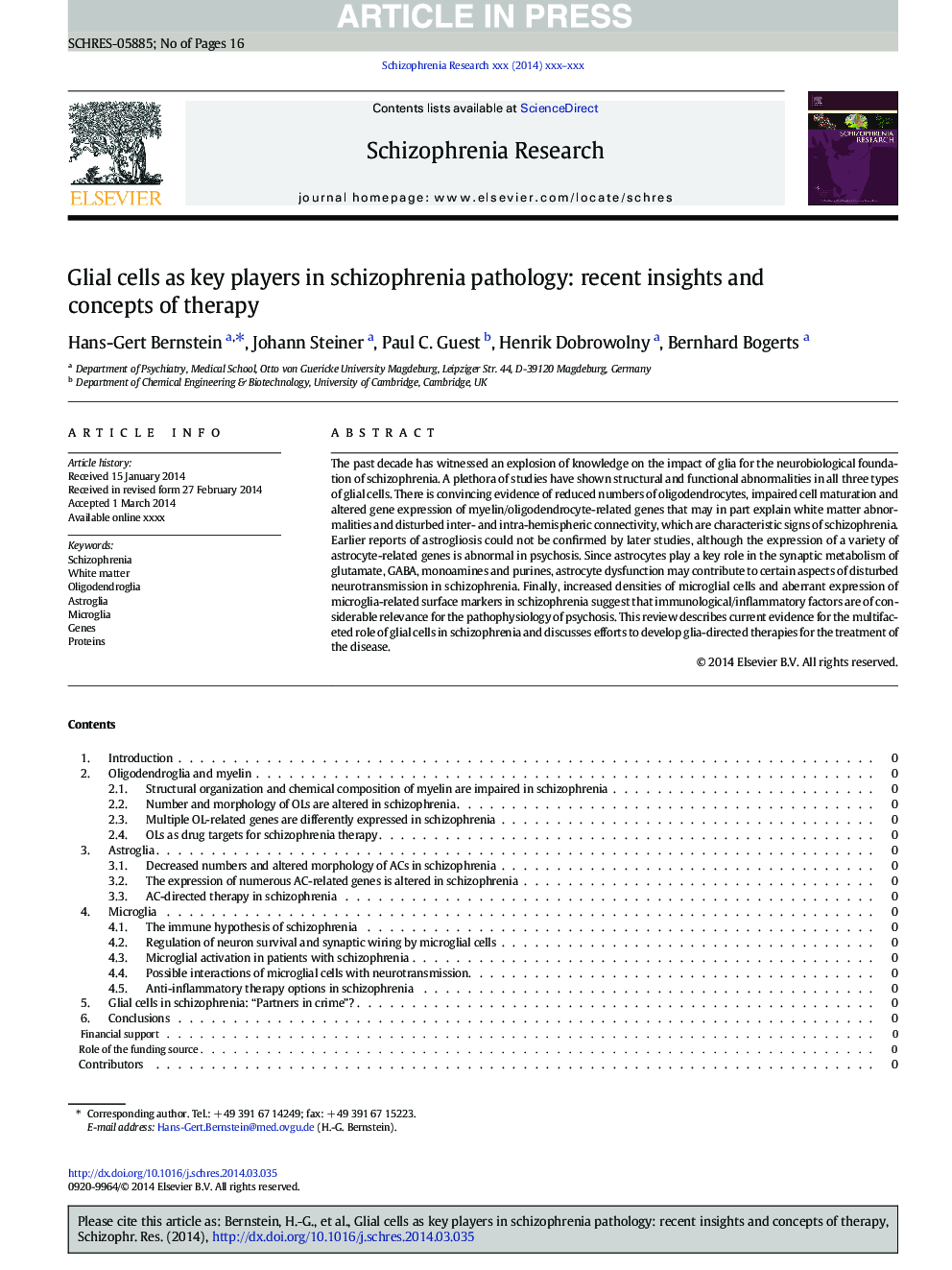| Article ID | Journal | Published Year | Pages | File Type |
|---|---|---|---|---|
| 10307411 | Schizophrenia Research | 2015 | 16 Pages |
Abstract
The past decade has witnessed an explosion of knowledge on the impact of glia for the neurobiological foundation of schizophrenia. A plethora of studies have shown structural and functional abnormalities in all three types of glial cells. There is convincing evidence of reduced numbers of oligodendrocytes, impaired cell maturation and altered gene expression of myelin/oligodendrocyte-related genes that may in part explain white matter abnormalities and disturbed inter- and intra-hemispheric connectivity, which are characteristic signs of schizophrenia. Earlier reports of astrogliosis could not be confirmed by later studies, although the expression of a variety of astrocyte-related genes is abnormal in psychosis. Since astrocytes play a key role in the synaptic metabolism of glutamate, GABA, monoamines and purines, astrocyte dysfunction may contribute to certain aspects of disturbed neurotransmission in schizophrenia. Finally, increased densities of microglial cells and aberrant expression of microglia-related surface markers in schizophrenia suggest that immunological/inflammatory factors are of considerable relevance for the pathophysiology of psychosis. This review describes current evidence for the multifaceted role of glial cells in schizophrenia and discusses efforts to develop glia-directed therapies for the treatment of the disease.
Related Topics
Life Sciences
Neuroscience
Behavioral Neuroscience
Authors
Hans-Gert Bernstein, Johann Steiner, Paul C. Guest, Henrik Dobrowolny, Bernhard Bogerts,
